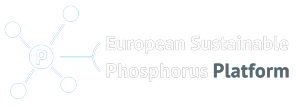Process & contact
https://www.sfi.ie/challenges/future-food-systems/SINFERT
Updated 7/2024
Input materials
Bone meal ash (BMA), fish bone meal ash (FBMA); apatite phosphate rock (APR), sewage sludge ash (SSA), chicken manure ash (CMA); struvite, vivianite and calcined vivianite (all tested).
Output products
Orthophosphoric acid; plant-available fully soluble inorganic fertilisers MAP, DAP.
Inorganic phosphates e.g. trisodium phosphate.
Triorganophosphates e.g. triethylphosphate; work is underway to produce triorganophosphines and triorganophosphine oxides that can otherwise only be accessed via white phosphorus.
Anhydrous metal chlorides e.g. CaCl2; FeCl3
Process description
Solid phosphate materials (particle size 25-100 um, 5-18%P w/w, 0-5% water w/w) are treated in a liquid phase system using a proprietary reagent, and a catalyst. The process generates a volatile phosphorus intermediate which is separated from the excess promoter via distillation at 60-100 °C. The volatile intermediate is treated with water to obtain phosphoric acid and its derivatives, or with alcohols for phosphate esters. The core process runs isothermally at a medium temperature (60-100°C) with possibility for heat from hydrolysis and etherification processes being recycled.
The process generates water-soluble solid byproduct/residue containing metal chlorides eg CaCl2 from apatite.
P recovery of 90%+ has been achieved in repeated batch lab tests on apatite; the target is 90% for vivianite, SSA, BMA and FBMA.
Heavy metals are retained in the solid slag as nonvolatile components.
Operating status
Laboratory gram scale. Scale up to 100-1000g is under way in the following stage of the project 2025-26.
